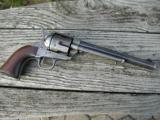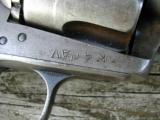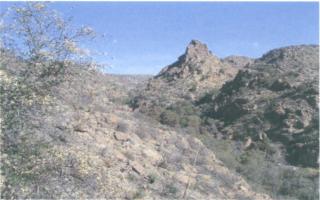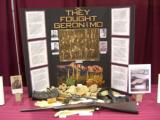


Dave Lanara Restoration
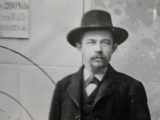
Copyright 2003 by Dave Lanara, all rights reserved. Reproduction of these pages or their contents is forbidden without consent of the author.
WESTERN HISTORY
A BRIEF HISTORY OF COMPANY K, FOURTH CAVALRY.
If you have seen the Company K Colt and Trapdoor carbine on the collections page, here's a little historical background. Company K was stationed at Fort Sill, Oklahoma. Having received the new Colts and Springfield carbines, issued from the San Antonio arsenal, they were responsible for keeping order among the Indians and settlers in the territory and surrounding states of Texas, New Mexico and Colorado.
K Company was commanded by a Captain Hyel, had 40 troopers, three officers, a civilian interpreter and possibly 4 to 6 Indian scouts. One of the officers, Lt. James Parker, was assigned to K Company in 1876 after graduation from West Point. Parker fit in well, and was a take charge officer from the start. In his book, "The Old Army", he wrote that the Colt cavalry revolver was held in high regard by the local settlers and cowboys, who would pay three to five times the value if they could convince a soldier to sell one. Parker said theft was rampant on the post, so in order to keep track of these valuable weapons, he would collect them after drill and lock them in a wooden box, which he kept under his bed! Logic would dictate that Parker was the officer responsible for the stamping of CO K 4 CAV on these Colts and carbines. No other cavalry company at Fort Sill has been represented with a similar stamping on any known weapons.
Parker and K Company marched into Mexico in May of 1878 to quell marauding Kickapoo and Apache Indians. Mexican soldiers had been trading with these killers of Texas citizens, and were prepared to fight the Americans. Ranald Mackenize, the regimental commander, claimed that there would be war with Mexico, but it was not to be. After a grueling march searching for the Indians, he returned to the border without encountering any hostiles. There, at the Rio Grande, he collected K and M company and proceeded towards Remolino. He had three units of light artillery with him, including several Gataling guns. The Mexicans and Indians were intimidated, and when confronted, rattled sabers and then fled the field and town. The Mexican government eventually cooperated with the U.S. and the menace was finally brought under control. John Wayne's "Rio Grande" was loosely based upon this story, and Charlton Heston's "Major Dundee" was even closer in context.
In 1880, Parker was given complete command of K company after Hyel was sent east for several years. He was especially happy and proud of this promotion to 1st Lt., and his troop, Company K, the Black Horse troop, became legendary in the Cavalry for their ability at drill and tactics..
K Company's most significant action took place in 1885, at an Arizona canyon called Devils Creek. 100 men of A and K company rode into the canyon, expecting an Apache ambush. When none came, the commander decided to take a bath in the creek! He ordered his officers to position men up the canyon as a vanguard. While he bathed, Apaches under Geronimo positioned themselves on the ridges above, commanding a field of fire on nearly four sides, typically an impossible force to defend against. The Indians opened fire on the men, but instead of hiding behind rocks and boulders to return fire, Parker audaciously ordered a charge up the nearest hill! 18 men of K company ran up the steep slope, seeking cover as they went, firing their Colts and carbines as they advanced. When Parker reached the top, he found evidence of a large camp and several blood trails, but no dead hostiles. His charge had unnerved them all. From this vantage point, he was able to direct fire across the canyon at the other Indian positions, and this ended the action after an hour and a half. He recommend two of his troopers for the CMH at that battle, and was awarded with the Silver Star in 1928, over 45 years later.
Company K continued to serve at various places throughout the west. In 1891-92, the company was on patrol in Sequoia National Park under the command of Captain Joseph H. Dorst. Their duty was to keep order in the park and prevent local sheep ranchers from using the parklands as grazing areas, who's sheep destroyed the root systems of low lying plants and flowers. Poachers were also rampant in the parks, and since tourism was just beginning and several incidents of robbery had taken place, a military presence was necessary.
Interestingly, Parker, now a captain, was assigned as acting superintendent of Sequoia in 1893, and his new assignment to B troop, 4th Cavalry, had him patrolling the park for two years. In 1905, K Company was assigned patrol duty in Yosemite National Park under the command of Major. Harry C. Benson. It's plain to see that these 4th CAV marked Colts shared a wide range of duties, and were among the first new single action Colts issued to the U.S. military that saw action on the western frontier.
If you have any further information or know of artifacts related to Company K and General Parker, please contact by emailing or by calling me.
Copyright 2006 by Dave Lanara
All right reserved.
Devils Creek Arizona, click to enlarge
Recent display at the Ohio
Collectors show featuring both Colt and carbine used by Company K against Geronimo. The officer at the lower right of the large photo is Capt. Parker. Major Mackenzie is seated in the center.
NOTE: The following story is protected by US copywrite laws.
Photos copyright Dave Lanara Enterprises 2010
J.P. Lower, Denver, Colorado
I am always seeking artifacts and weapons related to this gunsmith. Call or email if you have anything from his store or guns marked with his name, knives too!
